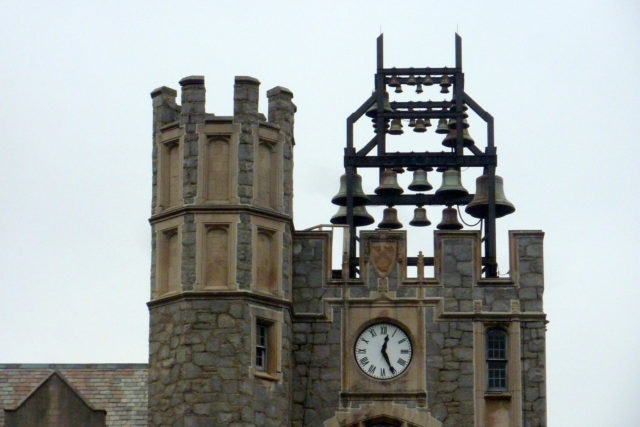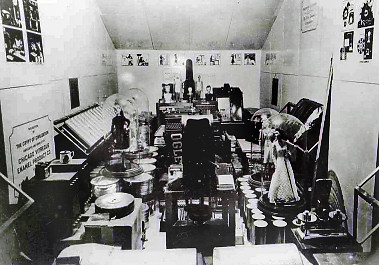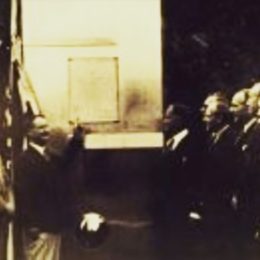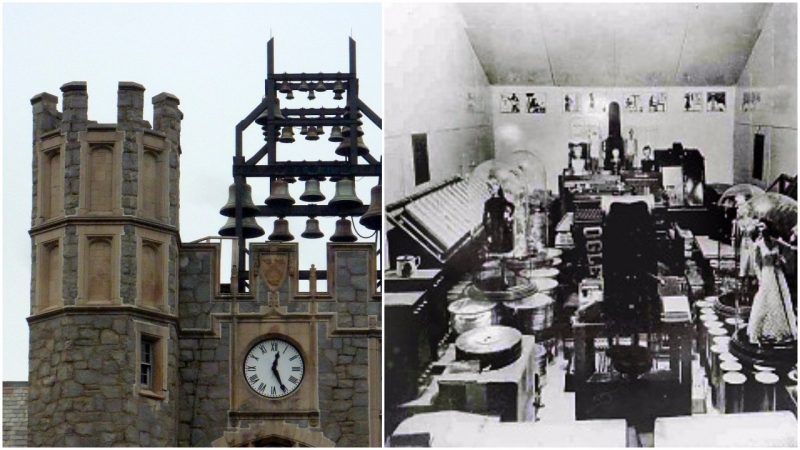If there is one thing that we’ve learned from history it’s the fact that keeping records and artifacts for future generations is crucial for the progress of humanity. We learn from the past and we improve and develop through our successes and mistakes. Ever since writing was invented, people have taken notes on everything, from cooking recipes to scientific discoveries.
We always leave something behind, and it is better if we leave the evidence of our existence in an organized manner rather than leaving it in a chaotic mess. This is probably how the idea of a time capsule was born.
Time capsules come in different shapes and sizes, and their purpose is to resist the passing of the ages and pass the information on our way of life to the generations to come. This is exactly what Thornwell Jacobs (1877–1956) from Oglethorpe University in Brookhaven, Georgia, had in mind when he came up with the idea for the Crypt of Civilization, cited as the “first successful attempt to bury a record of this culture for any future inhabitants or visitors to the planet Earth” (Guinness Book of World Records).

The Crypt of Civilization is like a tomb preserving the objects held within, such as works of art and historical records made at the time of its construction. A tomb was its inspiration, with one small difference. The artifacts in this “tomb” are not meant to be offerings to the gods. Instead, they are one generation’s offerings to another distant generation of people.
Jacobs, the man who conceived the Crypt of Civilisation project, considers himself to be the “the father of the modern time capsule,” the first 20th-century man who came up with the idea of preserving human-made objects for future generations. He was inspired by the tombs of the Egyptian kings.

During the 1920s, he witnessed the opening of numerous pyramids, and he was amazed by the artifacts that were found preserved inside. It was a physical database of an ancient civilization. Although there were many artifacts, Jacobs wished there had been more records about the ordinary life and the customs of people. He also thought that it would be a good idea if the same were done for his generation, a “running story” of life in the 1930s.
Therefore, Jacobs decided to build his own tomb, a tomb dedicated to the products of humanity and not to a king or a deity. As an object meant to endure the centuries to come, the Crypt of Civilization is a 2,000-cubic-foot chamber built over an Appalachian granite bedrock, deep in the foundations of Phoebe Hearst Memorial Hall at Oglethorpe University.
The room was previously a swimming pool, and the conversion involved lining the walls with enamel plating. The chamber is covered with a seven-foot-thick stone roof that is additionally covered by the two-foot stone floor above. The crypt is sealed by a stainless-steel door welded shut, not to be opened until the time is right.
Besides making the chamber durable enough to survive the ages, it was also important to make the right choice regarding the artifacts and records placed inside. That is why Jacobs consulted Thomas Kimmwood Peters, his colleague from the university and a pioneering motion picture producer. Peters served as the Crypt’s archivist. The National Bureau of Standards was also involved in the process of construction and selection of artifacts. They offered technical advice for the proper storage of the objects. They chose stainless steel boxes filled with inert gas in order to prevent rapid aging.
In the spirit of the Egyptian tombs, the interior of the Crypt of Civilization is organized similarly. The walls are decorated by pictographs that explain how the artifacts and “ancient” knowledge should be accessed. Every item is meticulously marked and listed. Most of the items inside the crypt were donations from various institutions and individuals.

Here are some of the items that were chosen: a microfilm with more than 800 masterpieces of classic and contemporary literature (works such as the Bible, the Quran, Homer’s Iliad, and Dante’s Inferno); audio recordings of historical figures such as Joseph Stalin, Benito Mussolini, Franklin Roosevelt, and Adolf Hitler, as well as recording of fictional characters such as Popeye the Sailor. Some of the items besides the historical records include a toaster, seed samples, a radio, the usual things found in a woman’s purse, an adding machine, a sealed bottle of Budweiser beer, plastic toys of Donald Duck, dental floss, Artie Shaw records, a typewriter, and a cash register. There were also some wild suggestions that were not accepted: somebody thought that it would be a good idea if a dry martini (with an olive) was included in the collection.
Peters thought of everything. He included all the necessary equipment needed for reproduction of the records, items such as microfilm readers, projectors, and electricity generators, in case there is no electricity in the distant future.
The year chosen for the opening of the crypt was based on a belief that 4241 BC is the “earliest fixed date.” Since then, this has been disproven, but still, the opening date was never changed. Jacobs believed that there is a 6,177 years difference between the establishing of the Egyptian calendar and the year in which the crypt was made (1936). According to this calculation, he chose 8113 as the year of opening because it was 6,177 years away.
Jacobs words for those who will open the crypt sound extremely eerie from our perspective and will probably sound so in the future: He addressed the people in 8113 saying: “The world is engaged in burying our civilization forever, and here in this crypt we leave it to you.”
Related story from us: The eclipse that saved Christopher Columbus and his crew from starvation
With technology improving every day, vaults like the Crypt of Civilisation are probably unnecessary. The digital format is a time capsule in itself, but it can’t hurt if we leave something physical behind too. There is one thing that needs to be remembered: future civilizations raise from the ashes and the experiences of those who are past and gone, and it is our duty that we leave more experience than ash to our descendants.
